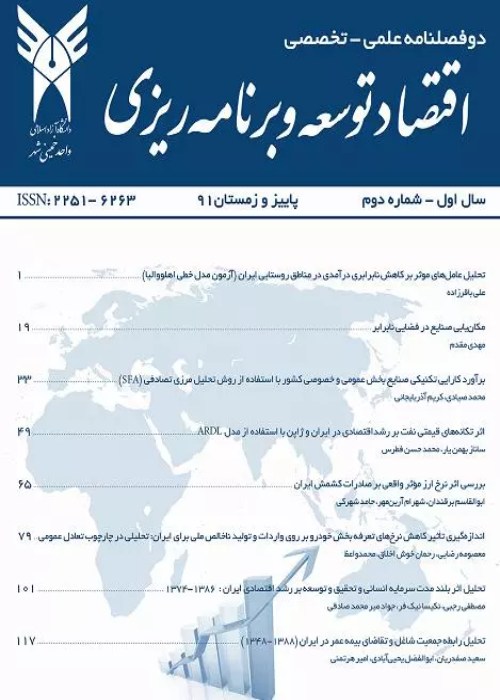Analyzing the Role of Central Bank Monetary Policies in National Economy
Abstract:
Different countries apply two means including financial policy that is accessible for government and monetary policies that are at disposal of the Central Bank to regulate the economy and its balance. The Central Bank is designer of the monetary policies in each country; of course, its successful performance is related to the consistent implementation with the financial policies of government. Assuming the existence of enough independence of the Central Bank, the monetary policies play a very impressive role on improving the national economy and achieving the economic development in today's world. This is why adherents of the monetary policies (monetarists) are considered among the most prominent scholars of the economy. On the other hand, monetary policies are under special attention of policy-makers due to short-term internal interruption as well. The approval of monetary policies does not require to a lot bureaucracy and thus is interested and accepted by economic policy-makers, but it is sometimes unexpected and unintended in addition to its impact on economic variables. To apply a successful monetary policy, it is necessary that the monetary authorities properly evaluate the time and the effect of these policies on economic variables. Turbulence of monetary and currency system has become a great problem for Irans economy in the past decade. High liquidity and its disproportion to monetary and production needs of the country, as well as its composition changes, inflation, and lack of control over the currency market reduce the efficiency of the Central Bank, and it is necessary that the independence of Central Bank to be seriously considered. Thus in this research, the variables of gross domestic product (GDP), inflation, liquidity, oil prices, and government expenditures have been used within an economic model by using the VECM method and quarterly data for the period from 2000:2 to 2012:1. The aim of this study is to investigate the effectiveness of monetary policies (taking into consideration the conditions of oil economy) on Iran's gross domestic product (GDP) and analyze the Central Bank policies in the last decade particularly period from 2000:2 to 2012:1. In this article, the process of gross domestic product (GDP) has been considered as representative of the national economy. The results show that monetary policy despite the different fluctuations has no a significant effect on national production in comparison to financial policy.
Keywords:
Language:
Persian
Published:
Journal of Development Economics and Planning, Volume:4 Issue: 2, 2016
Pages:
19 to 42
magiran.com/p1775252
دانلود و مطالعه متن این مقاله با یکی از روشهای زیر امکان پذیر است:
اشتراک شخصی
با عضویت و پرداخت آنلاین حق اشتراک یکساله به مبلغ 1,390,000ريال میتوانید 70 عنوان مطلب دانلود کنید!
اشتراک سازمانی
به کتابخانه دانشگاه یا محل کار خود پیشنهاد کنید تا اشتراک سازمانی این پایگاه را برای دسترسی نامحدود همه کاربران به متن مطالب تهیه نمایند!
توجه!
- حق عضویت دریافتی صرف حمایت از نشریات عضو و نگهداری، تکمیل و توسعه مگیران میشود.
- پرداخت حق اشتراک و دانلود مقالات اجازه بازنشر آن در سایر رسانههای چاپی و دیجیتال را به کاربر نمیدهد.
In order to view content subscription is required
Personal subscription
Subscribe magiran.com for 70 € euros via PayPal and download 70 articles during a year.
Organization subscription
Please contact us to subscribe your university or library for unlimited access!




